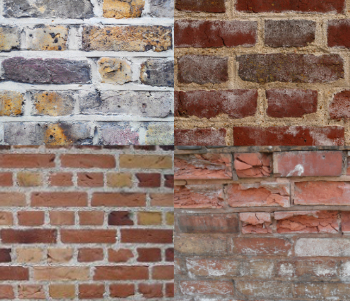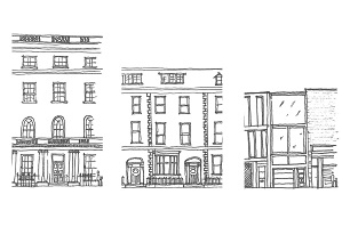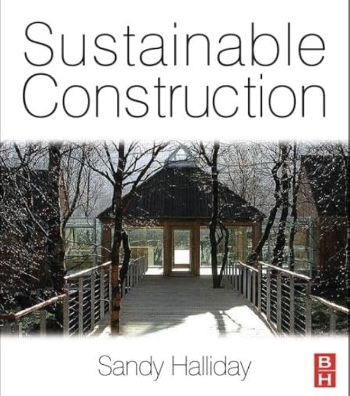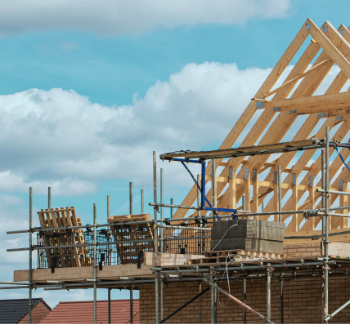Pebbledash
Pebbledash is a form of render used for the external walls of a building in which the top coat is textured by pebbles and stone fragments to create a rough finish. The wall surface is plastered with render and the pebbledash material thrown and pressed in while still wet.
This is similar to roughcast rendering in which larger stones are applied mixed into the mortar before being applied to walls. This produces a softer finished texture which is often painted. This technique is commonly used for coastal buildings to provide weather protection, and can also be found on medieval buildings and stately homes.
Pebbledash became a popular rendering technique between the 1890’s and the 1930s as part of the Arts and crafts movement which sought to revive traditional building processes as forms of vernacular architecture. It was cost-effective but also very durable. These characteristics lead to pebbledash being used widely in the post-war years of housing development, often as means of covering up poor workmanship.
Pebbledash has since come to be a divisive material, often being criticised for being ugly and impervious, as well as for failing to take account of the individual historic fabric of buildings. It is even thought to have a negative impact on the value of a property.
[edit] Related articles on Designing Buildings Wiki
- Arts and craft movement.
- Ashlar.
- Brick.
- Brick veneer.
- Blockwork.
- Cement.
- Ceramics.
- Cladding for buildings.
- Gravel.
- Harl.
- Kinetic facade.
- Mortar.
- Natural stone cladding.
- Nineteenth century architecture.
- Parge coat.
- Quoin.
- Rendering.
- Roughcast and pebbledash.
- Rubble masonry.
- Rustication.
- Screed.
- Stucco.
- Vernacular architecture.
[edit] External resources
Featured articles and news
Introducing or next Guest Editor Arun Baybars
Practising architect and design panel review member.
Quick summary by size, shape, test, material, use or bonding.
Types of rapidly renewable content
From forestry to agricultural crops and their by-products.
Terraced houses and the public realm
The discernible difference between the public realm of detached housing and of terraced housing.
Put digitalisation and sustainability at the core of curricula
Project management educators are urged.
Looking back at the influence of climate events
From a designer and writer: 'There are limits to growth but no limits to development'.
Terms, histories, theories and practice.
Biophilic design and natural light
Letting in the light and natural elements into spaces.
APM Programme Management Conference 2024
Strategies for Success.
Residential takes the reins as contract awards even out
Contracts down, but remain above the last quarter of 2023.
Celebrating Eid and the largest mud-brick building.
Barry Kingscote claims prestigious CIOB CMYA Award.
The British Mosque: an architectural and social history
The story of some 1,500 mosques or more in Britain.
Heat pump refrigerants, efficiencies and impacts
R12 to R1270 what are the differences?
Global heat pump market in 2023
Challenging times with positive but modest outlook.
Beyond the infrastructure pipeline
Opportunities and chokepoints.























